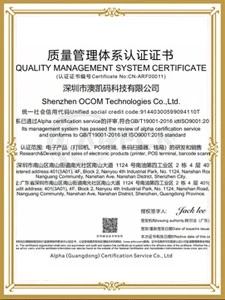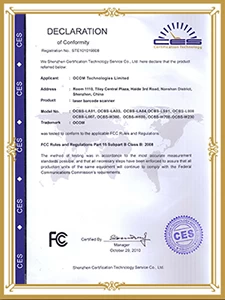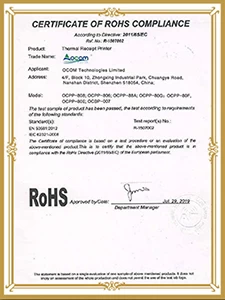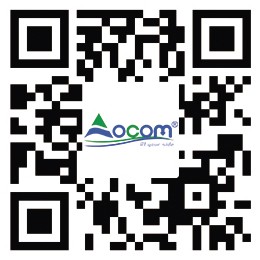Definition and classification of barcode scanner
What is a barcode scanner ?
A barcode reader or scanner is an electronic device for reading printed barcodes. Like a flatbed scanner, it consists of a light source, a lens and a light sensor translating optical impulses into electrical ones. Additionally, nearly all barcode readers contain decoder circuitry analyzing the barcodes image data provided by the sensor and sending the barcodes content to the scanner's output port.
Initial Research
The first step in finding the right scanner is identifying your specific needs....
What environment will the scanner be used in?
How often will it be used?
What kind of barcodes will you be reading?
Do you need the scanner to be corded or wireless ?
What type of barcodes do you need to read?
1D:
If you are looking to read "conventional" 1D barcodes (these are the ones commonly found on most supermarket products you would purchase) then all you need is a 1D barcode scanner. 1D barcode scanners are capable of reading 1D barcodes ONLY. 1D barcodes typically hold a single line of information, such as a part number.
2D:
If you are looking to scan 2D barcodes (these are the ones found on advertisement boards or magazine articles for example and look like a square maze), then you will need to look at 2D barcode scanners. 2D barcode scanners are capable of reading both 1D AND 2D barcodes. 2D barcodes are capable of holding multiple lines of information, such as someones name, address, and phone numbers.
Barcode Scan Engines
One of the most important concerns when choosing a suitable scanner is the type of scan engine it has. This is ultimately dependent on the type of barcodes that you will be reading and how aggressive you need the scanner to be. There are 3 main types of scan engines:
Laser
This is the most well known scanner type. It uses a red diode laser to read the reflectance of the black and white spaces in a barcode. Laser scanners are only able to read standard linear (1D) barcodes but are also the most cost effective option. Standard laser scanners can read from a few inches to a foot or two away depending on the size of the barcode. Lasers tend to be more accurate in terms of aiming, so if you have barcodes close together this is a real advantage.
Linear Imager
Linear imager scanners are similar to lasers in that they also only read 1D barcodes. But instead of reading reflected light from the laser, they take a picture of the barcode. It then analyzes this image to extract the information from the code. Linear imagers have become a very good replacement for laser scanner as their read ranges and costs have become similar. A linear imager also does a better job reading poorly printed or damaged codes compared to lasers. For applications that need a more aggressive scanner, a linear imager will be a great fit for the same cost.
2D Area Imagers
Like linear imagers, full 2D imagers also capture an image to analyze. But compared to the linear only devices, these scanners can read any type of barcode. 1D, stacked, and 2D barcodes are all supported by a 2D imager. Another advantage these imagers have is that the orientation of the barcode isn't important when reading. With lasers and linear imagers, you have to line up the indicator horizontally across the barcode. A 2D imager is taking a more detailed image and is more intelligent, so you can read a code in any direction. This results in faster reads with less aiming. 2D imagers can also read barcodes off of any surface including a PC monitor or phone screen.
Form Factors
Once you know what type of scanner you'll need, the next big question is what form factor the scanner will be. Most of us are familiar with the basic gun-style and in-counter scanners from retail supermarket stores. There are 4 main form factors for scanners, and each has advantages depending on your application and how you'll use the scanner.
Handheld scanners are by far the most common form that scanners come in and are very easy to operate. Simply aim the scanner at the barcode and pull the trigger. Most models will also offer a stand for hands-free operation. Handheld scanners are also available in cordless form to avoid cable clutter and increase your mobility.
Presentation scanners are designed to sit on a counter-top and don't need to be picked-up or held. These scanners are made for hands-free operation and don't require triggering to read. Likewise, instead of a single aimer like handheld scanners, presentation scanners have wide reading areas to reduce the need for aiming. You'll find these types of scanners at retail checkouts since it is easy to scan lots of items quickly. Just present the barcode in front of the scanner and it will read it automatically.
In-counter scanners are similar to presentation scanners in that you just present the barcode in front of the reader - however, these are made to be built into a counter-top. You have probably come across these types of scanners at supermarkets and self checkouts.Many models also have integrated scales to completely serve a POS lane.
Fixed Position scanners are a bit more specialised compared to the other types since it is really meant to be integrated with a larger automated system. These scanners are made to be mounted on a conveyor line or in a kiosk and do not have a typical trigger or button to scan. Often, these scanners will always be on or get triggered by external sensors or controllers. Fixed position scanners come in a wide range of speeds to accommodate even very high speed assembly lines without any user intervention
Connectivity - Corded vs. Wireless
Corded
Every scanner has to communicate with a PC or terminal device to transmit the barcode information into the software that you are using. Historically, there were only corded scanners that connected directly to the PC through a cable. These are still the most common scanner type and normally interface with a PC through a USB connection. Serial (RS232), PS/2, and proprietary terminal connections are also available for many models. Corded scanners are easy to get up and running and will be your least expensive option.
Wireless
Wireless scanners have become more common, as their costs have become much more affordable. These handheld scanners function the same way a corded scanner does except that the scanner communicates to a base station wirelessly. This base station is then connected to your PC through a cable. Your PC does not need to have any wireless support since the cradle and scanner handle all of this. Just plug in the cradle, pair the scanner to the base, and you are ready to start scanning. It is very easy to replace a corded scanner with a cordless one since it has no effect on your PC or software. Some wireless models also offer additional features that corded scanners don't, such as batch memory modes and direct pairing, without the need for a cradle. This makes it a perfect match to use with a laptop, tablet, or smartphone that has built-in Bluetooth capabilities. Cordless scanners can provide greater mobility and freedom from cable clutter in any application.
Ruggedness
Regardless of the environment that you'll be using your scanner in, ruggedness is always something to consider. Environment is a big factor, though you should also consider how the scanner will be used. You may be in a standard environment but if the scanners are mistreated, a more rugged option will help save time and money down the road.
Most scanners are designed for daily use in an office or retail environment. An accidental drop once in a while will be ok. But if you are using your scanners in a warehouse or outdoor environment, you will want to consider a ruggedized unit. The differences between a ruggedized and standard model are quite drastic. Rugged units are completely sealed against dust and can handle repeated drops onto concrete. With a rubberized case, they can handle severe mistreatment. Rugged scanner have a much better IP rating than standard unit. Read more on IP ratings below.
You can always identify a rugged scanner by their bright yellow or red cases. They may be more expensive, but the time lost when a scanner breaks and the cost of replacing it quickly balances out the initial extra cost.


















